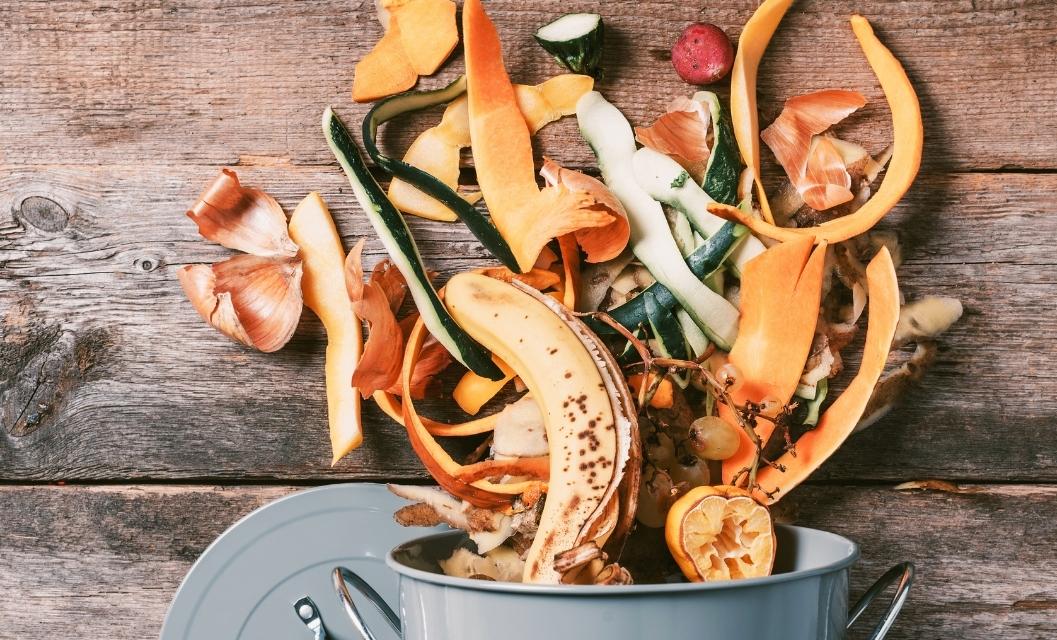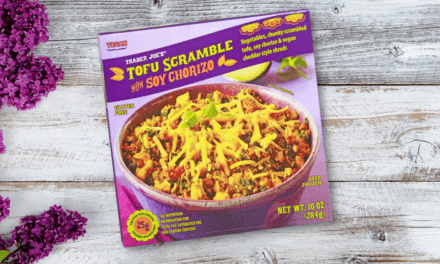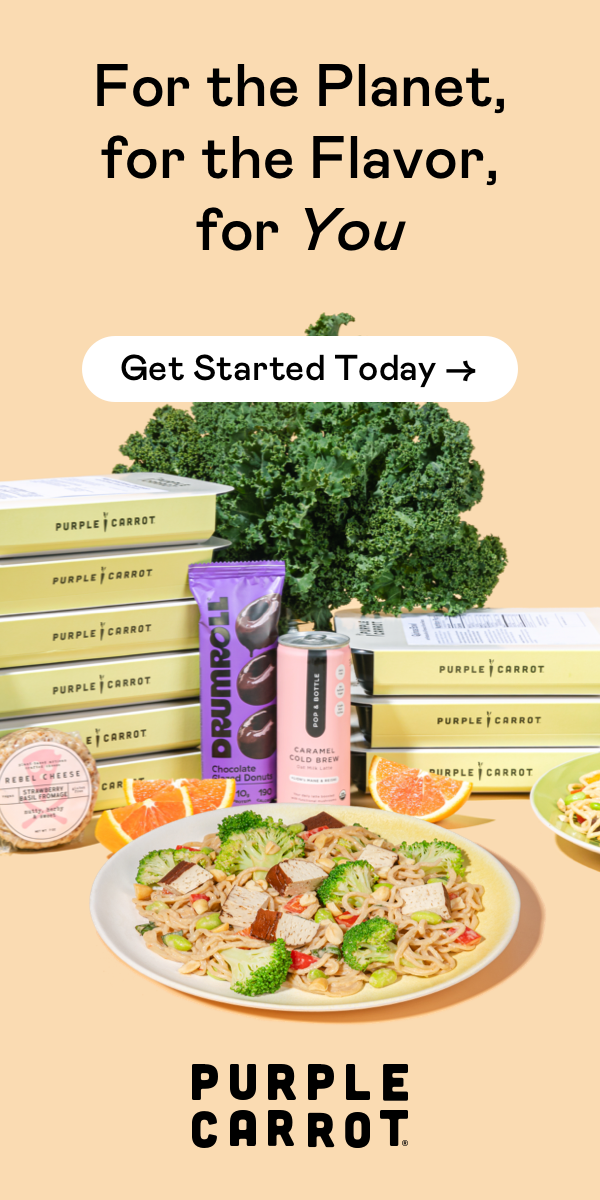Food waste is a global issue. Whether it’s from over-plating in a restaurant or throwing away the last of a salad because it’s gone bad, most people waste more food than they care to admit. According to the U.N. Food and Agriculture Organization, around a third of all food produced globally (approximately 1.3 billion tons) is wasted every year. The good news? You can do something about it! So let’s look at some ways to reduce food waste at home that work.
1. Create Compost with Leftover Food Scraps
One of the best ways to reduce food waste at home is to create compost with leftover food scraps. Composting is a natural form of recycling that turns organic material like food scraps, yard trimmings, and leaves into nutrient-rich soil. If you have a garden, there are obvious benefits to composting.
You can make your own compost bin or purchase a commercial version like this dual chamber tumbling composter I’ve been using in my yard for years!
Put a “scrap” bucket next to your kitchen sink for vegetable and fruit scraps, which you can regularly add to the compost pile without attracting pests. You can also toss items like coffee grounds and tea bags into the bucket. If you don’t want to keep a scrap bucket in your kitchen, store the materials in an airtight bag or container in your freezer until you’re ready to add them to your compost pile or bin.
If you’re not ready to start composting on your own, many cities now offer community composting programs. These programs provide residents with a place to drop off their food scraps, which are then turned into compost that is used in local parks or community gardens. Some of these programs will even come to your house and pick up your vegetable scraps on a regular basis. So there’s no excuse not to get started – composting is easy, good for the environment, and beneficial for your garden!
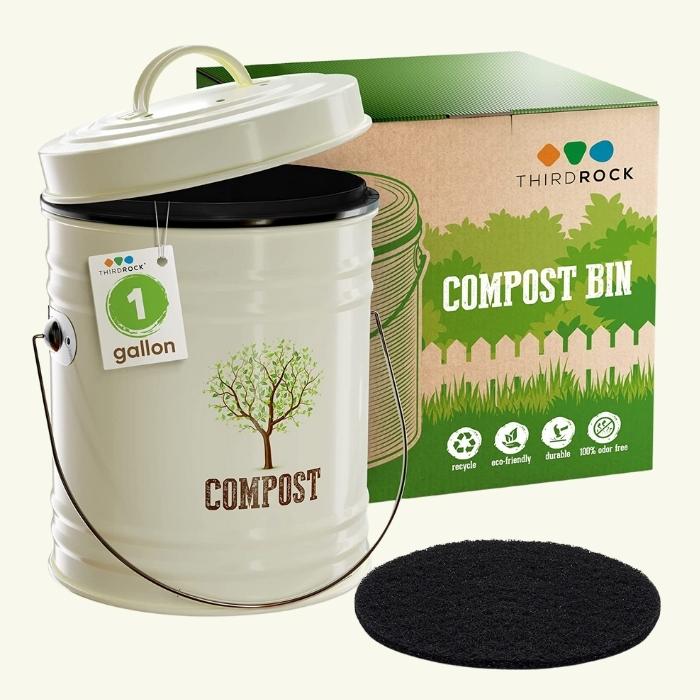
Third Rock makes odor-free compost buckets that actually look good in your kitchen! | Instagram: @thirdrockretail
2. Plan Your Meals Before Your Shop
When you make a grocery list before you hit the store, you’ll only buy what you will actually use. That will reduce uneaten food and trips to the grocery store to get more ingredients.
When cooking meals at home, use recipes that call for ingredients already in your pantry or freezer instead of buying new items at the grocery store each time. Also, when cooking meals at home, know how many servings each recipe will make and plan accordingly. Sometimes recipes can make more servings than you realize.
3. Buy Ugly Produce
Many of us are guilty of judging a book by its cover, and produce is no exception. As a result, we often choose the perfectly shaped fruits and vegetables at the grocery store, leaving behind the misshapen or blemished ones.
Many grocery stores throw away or refuse items that don’t meet their aesthetic standards for display on their shelves, even though they are still edible. Fortunately, a growing number of companies are now selling ugly produce at a discount, making it more affordable for consumers.
The “ugly produce” movement encourages people to purchase fruits and veggies with marks or blemishes, which are fine to eat otherwise. Buying ugly produce is a great way to reduce food waste, and you’ll still get all the nutritional benefits that the product offers. So next time you’re at the store, don’t be afraid to choose the less-than-perfect fruits and vegetables. They may not be flawless, but they’re still delicious – and good for you, too!
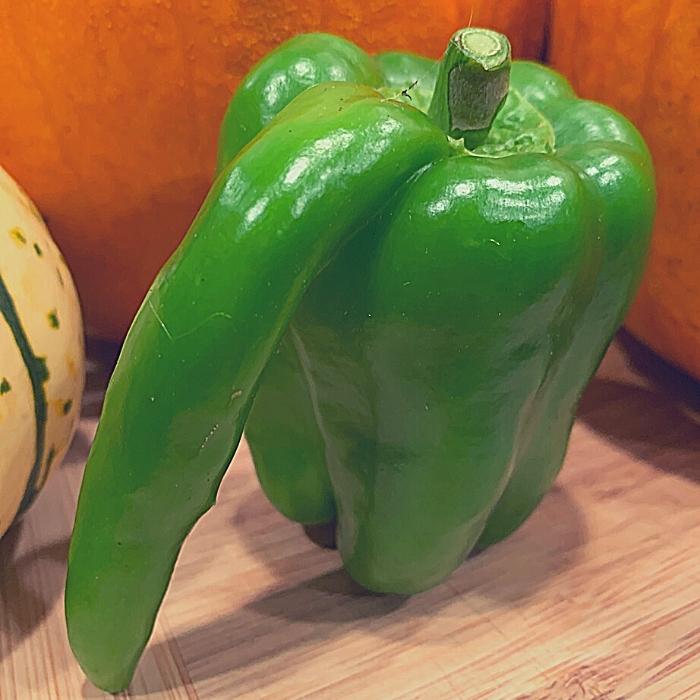
Imperfect produce like this pepper would normally be refused by most grocery stores. | Photo by Nicole @ VeganShowOff
4. Use Your Freezer
Freezing leftovers for later isn’t just for convenience’s sake; it’s also an easy way to avoid throwing out the food you don’t eat right away. Just remember to label and mark your food with a date, so you know how long it’s been there, and use it before it goes bad. By freezing, you can preserve food in its prime, use it later, and cut down on food waste in your home.
You can freeze almost anything, from leftover produce and bread to fresh herbs and coffee. Frozen food lasts a long time without losing its nutritional value or going bad.
Keep in mind that some foods don’t freeze as well as others. For example, lettuce and watery vegetables don’t do well when frozen. Cooked pasta also freezes poorly, but you can always cook it a little less than you usually would before freezing.
You can freeze almond milk and other non-dairy milk in ice cube trays to use in smoothies if you think you won’t use a carton up before it goes bad. Then you can blend the frozen plant milk cubes with any leftover greens, fruits, or veggies you may have frozen.
Instead of using your freezer as a holding spot for leftovers, incorporate them into your meal plan, so nothing gets lost at the back of the fridge. With a few exceptions, frozen foods can last indefinitely in your freezer. However, the quality of frozen foods will deteriorate over time.
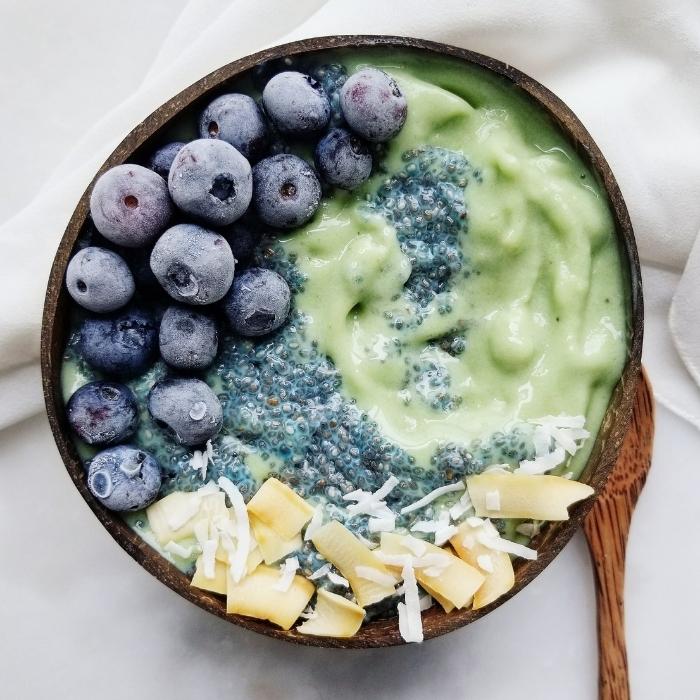
Freeze leftover plant milk in ice cube trays to use in smoothie bowls.
5. Use All Parts of a Food
Another source of food waste is the unused parts of vegetables, most of which are edible and nutrient-rich. For example, instead of throwing out broccoli stems, save them in a freezer bag to make broccoli slaw later. You might not know it, but banana peels are edible and nutritious, being a rich source of potassium, fiber, and antioxidants.
When we think of carrots, we usually just think of the orange part. But carrot tops are edible! They have a similar flavor to parsley and are packed with nutrients. For a peppery kick, you can also use beet greens and radish tops in salads or sautés.
Instead of tossing out fruit peels and vegetables when cooking, save them and make homemade tea from scratch. All you need is a Mason jar filled with citrus peels, ginger root slices, and cinnamon sticks.
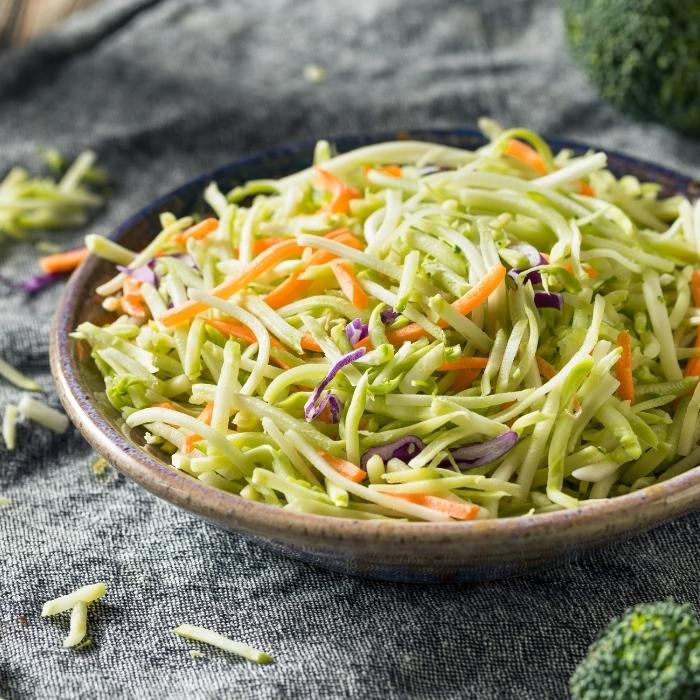
You can save broccoli stems in a freezer bag to make broccoli slaw or add to soups and stews.
6. Change Your Grocery Shopping Habits
Buy only what you need and try not to overbuy perishables like produce if it’s hard for you to get through them before they go bad. Also, avoid over-purchasing nonperishable items like canned goods and dry packaged foods. These foods may not spoil quickly, but eventually, they will lose their quality, so try to eat them before their expiration dates. And never grocery shop while hungry! You’re more likely to overshop and end up with unnecessary items if you do so on an empty stomach.
The Bottom Line
It can feel hard to resist the temptation to throw out food that’s gone bad, but there are plenty of ways to reduce food waste without much effort. All it takes is rethinking how and why you buy, cook, and eat food in the first place. Implement these tips into your life, and you’ll be well on your way to cutting down on how much you’re throwing out.

Nicole
Long time vegan living in upstate NY. Web developer and founder of Vegan ShowOff. She's addicted to ice cream and loves hiking, snowboarding, gardening, and travel. Read more from Nicole!

